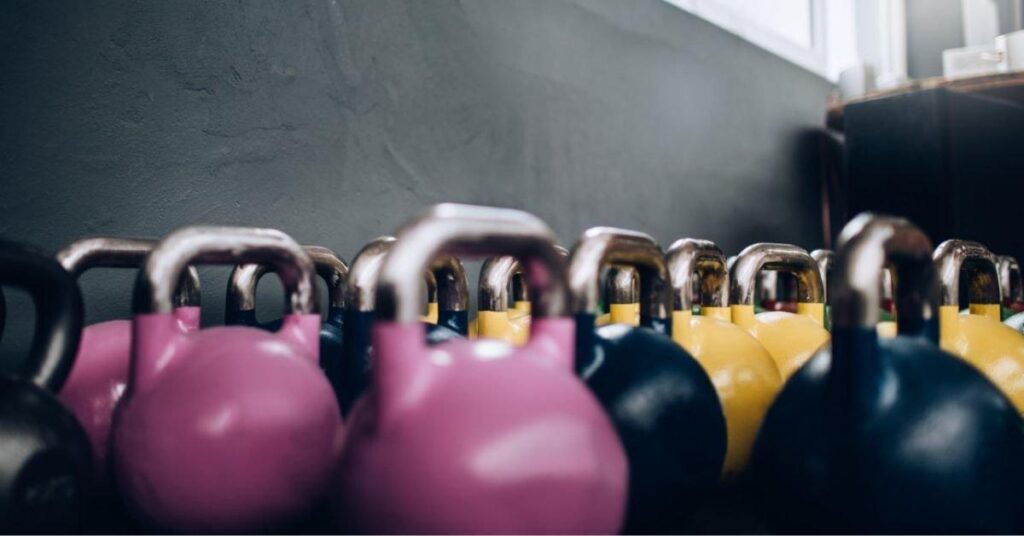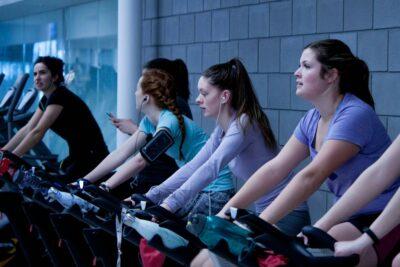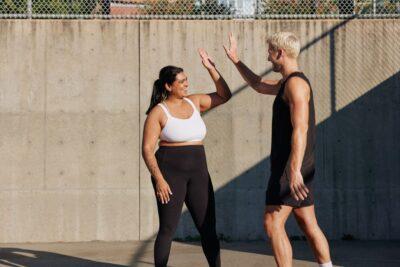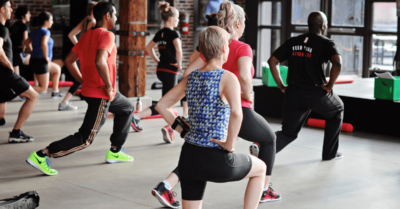In today’s world, people are busier than ever. Our lives are packed with schedules and daily routines. To get the most out of each day, we allocate specific times to specific activities wherever we can fit them in. In spite of our busyness, almost 96% of people find the time to take part in a daily leisure activity. They’ll socialize with friends, sit back and watch TV, or hit the gym to let off steam.
Every business will experience quieter periods at certain times; whether it’s down to a lack of necessity due to the weather or season, or the busy day-to-day lives of its customers. When was the last time you looked at a class attendance and thought “typical for this time of week/year”? Well, it’s time to get out of that mindset right now.
In the fitness industry, quiet gym times are expected during certain times of the day, as well as quieter months at certain times of the year. June, July, and August are commonly quieter, along with November and December. Acquisition and retention is an ongoing effort in any business, but with these peaks and falls; it’s exceptionally competitive in the fitness industry. Just a 5% increase in customer retention can increase a company’s profitability by 55%. In this article, we’ll dive into the specific reasons behind those quieter periods, and some strategies you can implement to stave them off.
When Are Gyms Usually Quiet?
The quieter times are a reflection of members’ busy lives and commitments outside of the gym. Peak times may differ slightly depending on factors such as gym location and what your studio offers. If your gym is in an area that’s densely populated with offices, you’ll likely experience more of a lunch-time rush than studios that are in more suburban areas.
Throughout the Week
There are several times throughout the week that your gym may be empty. The first busy period most studios will experience is early in the mornings, particularly on weekdays. The obvious cause for member influx at these times is work; the majority of people work a standard 9am-5pm day.
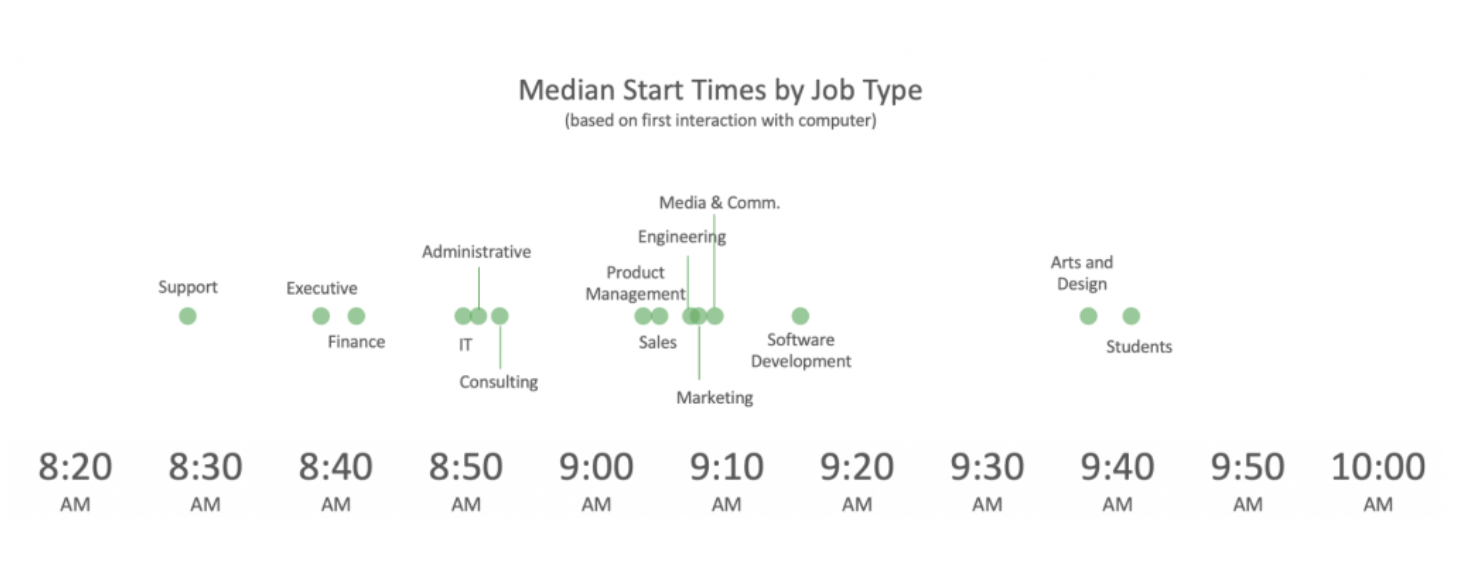
Source: www.rescuetime.com
Recent data collected by Rescue Time shows that most start work between 8 and 9.30am. The average American can spend up to 73 minutes of their day commuting, and it’s clear that this busy gym time reflects the average person’s morning routine. Workers will fit a workout in around their commute and start time. The same applies to peak times during the evening, particularly between 6-7pm. According to Fitbit’s user data, this is the most popular time of day that people workout. Again, this is likely because they visit the gym straight after work, fitting exercise in somewhere in between their commute home. While the afternoon is a notably quieter period, there is usually a slight pick up for office workers who like to get their workouts in at lunch-time.
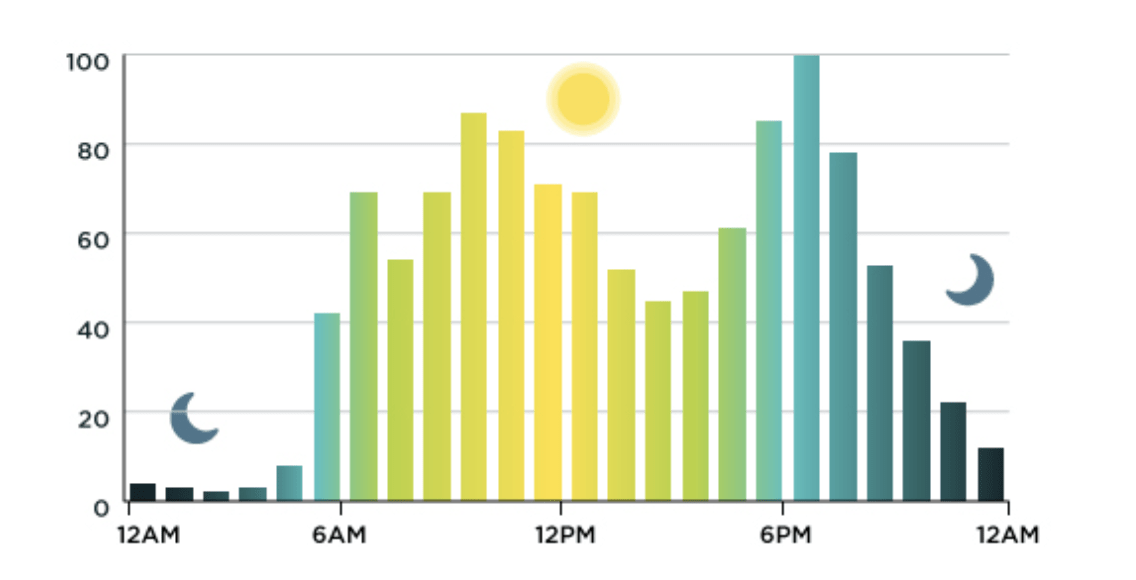
Source: www.blog.fitbit.com
In terms of days of the week, Monday is the most popular day, with a decline leading up to Friday and a notable attendance dip over the weekend. Again, these peak times can differ between clubs and gyms depending on location and class timetables, but it’s a good general indication of member’s gym habits. Most gym-goers will begin Monday feeling motivated and mentally prepared for a week of workouts; determined to make up for the weekend beers and extra slice of Sunday night pizza. Typically, mid-week is when motivation starts to waiver, and towards the end of the week, people’s focus tends to shift into weekend mode. Friday night drinks and socializing occupy the forefront of the mind, and the Monday motivation is long gone.
Throughout the Year
January is arguably the busiest time of year in the fitness industry. “New Year, new me” becomes the mantra for most as they embark upon their new fitness journey. The first 3-4 months of the year tend to be busy, fuelled by New Year’s resolutions and the colder weather encouraging people to favor exercising indoors. But unfortunately, intentions often fade quickly; 80% of all new gym members quit within the first five months. The Summer months will generally be slow for gyms, as people have holidays and activities planned, with more people opting to workout outside while the weather is nice. Cold winter months will encourage people to exercise at the gym, but November and December can be quiet as Christmas is a social time of year.
The Myth of “Quiet Time”
Here’s the reality: From the point of view of a gym owner, quiet times are a myth. Your gym should never be quiet. If you simply accept that it’s just “that time” of the week or year that’s typically slower, you’re accepting a destiny for failure. Successful gym owners anticipate when this might happen and put strategies in place to keep people coming through the door. Staving off the impact these quiet gym times can have is an integral part of making sure your business is growing. It’s challenging, but it’s up to you to get creative with how you can make up for the quieter periods, or better yet, avoid the dip in the first place. You can always proactively do more for potential and existing members to accommodate busy lifestyles and busy times of the year.
We’ve previously outlined everything you need to know to increase your membership sales, but getting members signed up is only the first step. Your retention strategy comes in next, and in terms of battling the quieter periods, you need to focus on what you’re offering to clients that can easily fit into their lives. How are you able to encourage your members to get into the gym for their workout – no matter what’s going on in their personal lives? How do you make your studio and services always convenient and accessible for them? In the next part of this article we’ll answer those questions and more.
7 Strategies to Make Sure Your Gym Is Never “Quiet.”
To recap, we’ve broken quieter gym times into two categories, weekly and annually:
The Top 10 Barriers
Slowing Your Fitness
Business Growth
Discover more - Weekly: Late morning, mid-afternoon and Friday through Sunday.
- Annually: June – August, and November – December.
There are always ways you can adapt your services to meet and exceed client needs. Sometimes it’s a matter of repositioning what you already offer, other times; it’s incentivizing members. We’ve split this section into three parts with strategies for addressing quiet gym times; weekdays, weekends and annually.
Weekdays
New Markets
You should know your gym’s niche and therefore, know who your target customers are. But that doesn’t mean you can’t broaden your target audience and narrow down marketing tactics to target them. While you may have specific equipment, facilities, or classes that are used at peak times, there are probably particular groups that you can appeal to during the quieter times too. The potential groups will differ depending on what your gym or studio offers; you just need to think creatively to identify who yours could be. We’ve outlined an example below to get you thinking in the right direction.
Market: Seniors
Get the quiet afternoons filled with senior-specific activities. No matter how old a person is, exercise can improve their quality of life. Like everyone, seniors need to engage in strength training, cardio and work on their flexibility to stay healthy. One study found that the average 65-year old can expect an additional 12.7 years of healthy life from exercising.
What classes or services can you provide in the afternoons that would specifically appeal to seniors? While it’s essential to understand any potential members of your studio as an individual, perhaps there is a way to appeal to seniors in general as a starting point. If you’re a class-based studio, consider repositioning some of your existing classes to appeal to seniors.
For example, dance classes, pilates, swimming, and yoga are all easily tailored into ‘gentle’ versions for older people. It’s worth keeping in mind that seniors may appreciate exercise classes as a time to socialize as well. This can influence how you market your senior activities; position them as a fun way to meet new, like-minded people.
Targeted Ads
Targeted ads are an essential part of running a fitness business. We’ve covered effective ads for lead generation on Facebook before. When it comes to beating quiet time, a super targeted ad is a great way to fill your studio during quiet periods. Again, the targeting you choose will depend on what aspect of your studio you want to advertise. The general rule when trying to fill get people in the door is to be as specific as possible. Say, for example, you’re a yoga studio. First, take the time to identify a niche audience that is likely to be free during the day. A great example is ‘mum-to-be.’ Schedule pregnancy Yoga classes for your quiet gym times and create a batch of pregnancy yoga Facebook ads. Target the ads at women who are part of ‘local mums’ groups on Facebook.
Corporate programs
When it comes to increasing gym revenue, many gyms and studios are expanding beyond the standard offering of memberships and classes. Diversifying with additional revenue streams, such as corporate programs are great for growing your business. Hosting classes for employees at your studio during lunch-time is perfect for filling your studio during the quiet time – while everyone else is at work. Offering corporate programs also has the added bonus of exposing your gym to potential new members. If you’re new to corporate wellness programs and not sure where to start, get inspired by our five great corporate wellness program ideas for your fitness business.
Weekends
Promotions
Running events and promotions when your quiet periods occur is an excellent incentive to get members hitting the gym. It’s something you can get creative with for those quiet weekends. Friday evenings can be tough to crack, as people usually begin their weekends straight from work with social plans. So make visiting your studio the social plan! Host a Friday evening event to draw in members and their friends. Try turning a standard class into more of an engaging activity for your members: A Friday night ‘Spin Social’: Get members in for a killer spinning session, have the class followed by a reception with some post-workout food and drinks. Put a spin on your marketing for the event; turn a social Friday workout into something people can enjoy, and feel good having ‘earned’ their socializing time. Apply a similar strategy to weekend events. Promote your usual class with the option for members to join a health food tasting brunch afterward for a small fee.
Yearly
In the fitness industry, quiet gym times tend to fall in the middle and towards the end of the year. Filling up your studio during these times is a matter of using relevant holidays and events and linking them to your fitness studio. It’s seasonal marketing; think summer body goals, festive fitness for Christmas and New Year’s Resolutions.
Summer Shape Up
June through August is often full of vacations and people generally wanting to be outside enjoying the weather! But that’s no excuse to let fitness slide. Run a summer shape-up challenge, marketing the event as a unique 6-week high-intensity program that’s different from the classes you usually offer. Perhaps you can use a well-known personal trainer to run the class – or promote the challenge as a set of classes “inspired by” an aspirational person from the fitness industry. Market the class competitively; with limited spaces at a special price for people who are willing to commit to the full 6-weeks. The great part of this campaign is that there is a clear timeline for members to reach their goals.
Festive Fitness
November and December are a busy couple of months for most people. Outside of work, this time of year becomes a time to regularly catch up with friends and family and last-minute runs to the high street for Christmas shopping. Attendance will likely be reasonable at the beginning of November and begin to drop, so use this time to promote upcoming festive events. A “12 Days of Fitness” challenge is easy for any gym or studio to implement because you can put any spin on it that you like.
Offering an incentive with the challenge will encourage members to get involved. As a simple example; have a chalkboard set up in your gym. Each day, write up a new challenge leaderboard. For example, day one could be a “1-minute burpee challenge”. Have a staff member encouraging people to take part on the studio floor, and add them to the leaderboard. Offer a prize to those with the best time or quantity – but only if they’ve completed all 12 days!
New Year’s Push
With January being the busiest month for most gyms, it makes sense to get ahead early. Promote pre-sales in December for new members to ensure a buzzing studio on January 1st. When it comes to promotions at this scale, don’t forget about your existing members. They probably won’t be too happy seeing a great sign up offer for new joiners, but no offers for existing members! The promotion doesn’t need to be steep; it’s a chance for you to show existing clients that you appreciate their loyalty. Put a spin on traditional New Year’s marketing; “New Year, Same You.” Send out a newsletter to existing members. Include a ‘welcome back’ offer and some motivating tips to encourage them to get back into a routine.
In Summary
Members’ routines and social commitments play a massive part in the daily/weekly turn out for studios. But whatever the reason: All of these “dips” during typical days and months are the quieter times that you need to focus on filling and making up for. Bringing your A-game to your acquisition and retention strategy is crucial in keeping a steady stream of members coming into your studio every week; even during the times’ others would regard as having a lower footfall.
The key to contracting quieter periods is preparation. If you’re proactive with strategies for counteracting quiet time; you’ll be improving the experience your gym already offers to members. Overall, it’s only going to increase your member retention in the long run.
Table of contents


